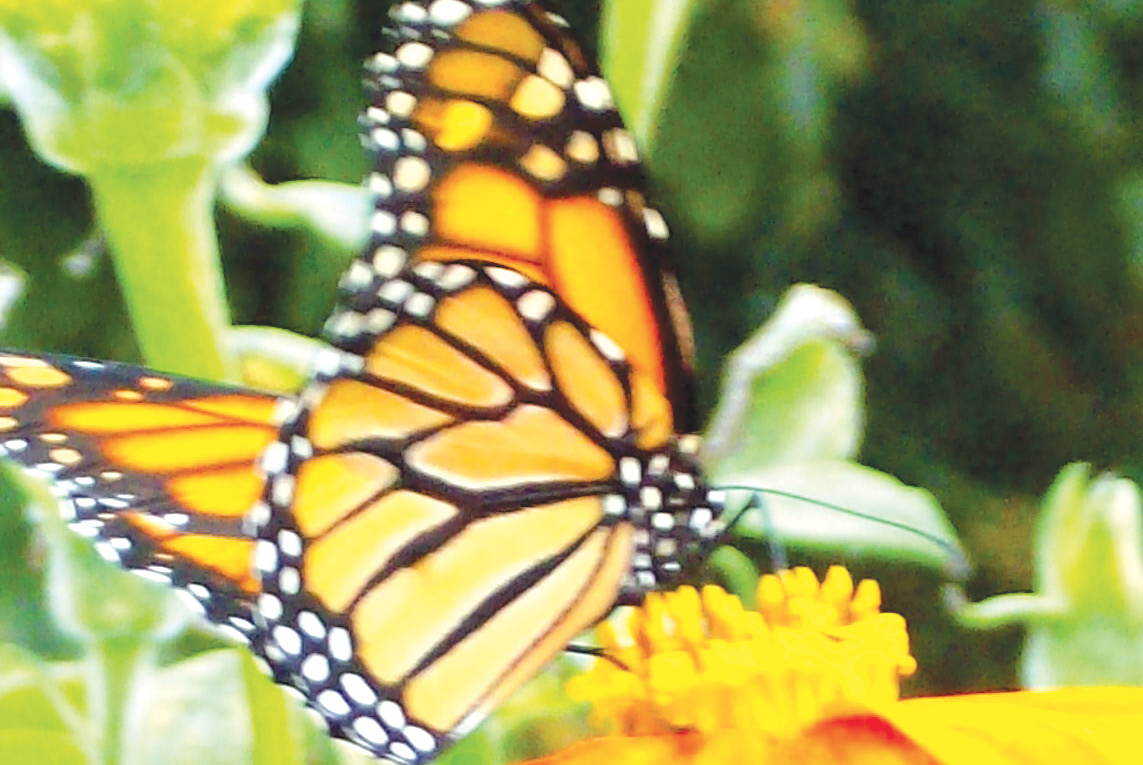Monarch butterflies are unable to survive cold winters so they migrate, mainly in October, to the south and west. Monarchs need an abundance of nectar from fall flowers to support them on their journey from the eastern and central U. S. to the mountains in Mexico. Most butterflies live only a few weeks, but some monarchs will survive up to nine months before returning north in the spring.
You may think your gardening endeavors are far too small to make a difference concerning the needs of butterflies, but that’s not true at all. Plant or do whatever you can do. Milkweed, goldenrod, ironweed, liatris, joe pye weed, sedums, wild sunflowers and salvias can provide excellent sources of nectar for our traveling friends. Zinnias, lantana, sunflowers, marigolds, cosmos and petunias also can supply excellent nutrition. Fruit and berries that drop from trees in late summer and autumn can make butterflies “jumpin-jack-flash” happy. The juice is full of the sugars butterflies need to prepare for the winter ahead. Also, we can provide butterflies an extra boost by delaying fall cleanup until early spring when feasible.
Milkweed Matters: Monarchs lay their eggs only on milkweed plants so their tiny caterpillar babies will have access to food the moment they hatch.
“If you think you’re too small to make a difference, try sleeping with a mosquito.” ~ Dalai Lama, Tibetan Leader (1935 –
Ref. Birds & Blooms
